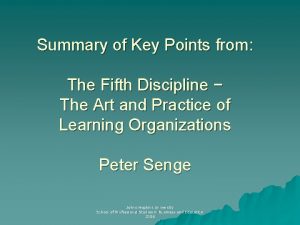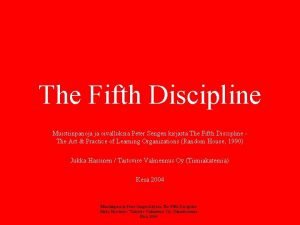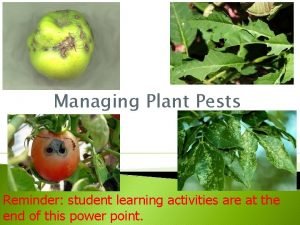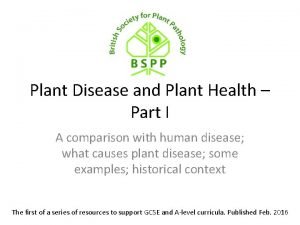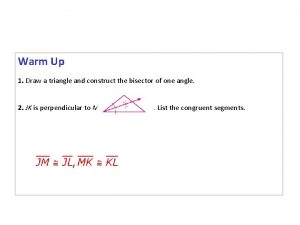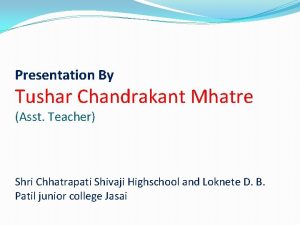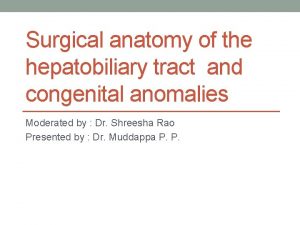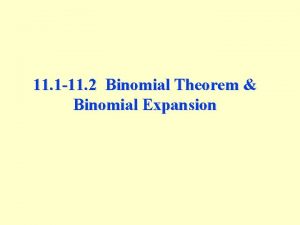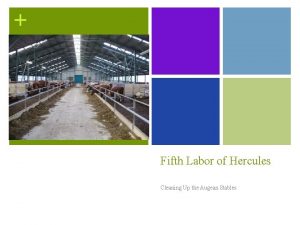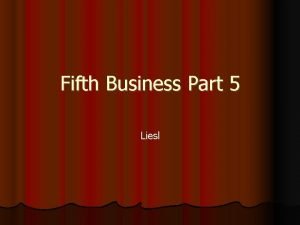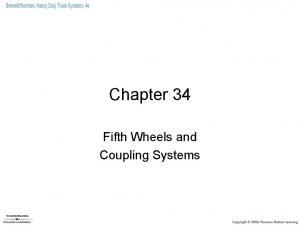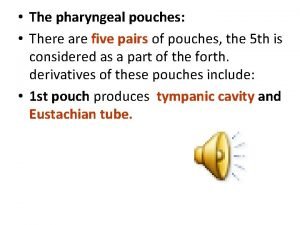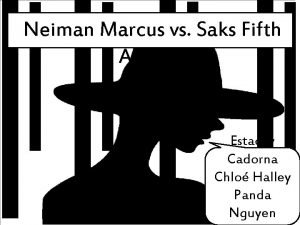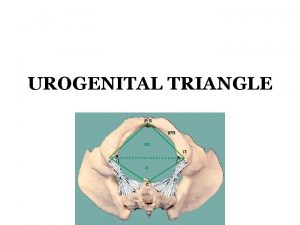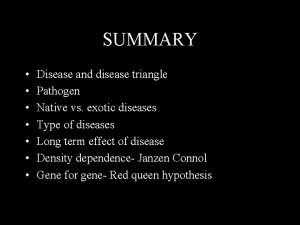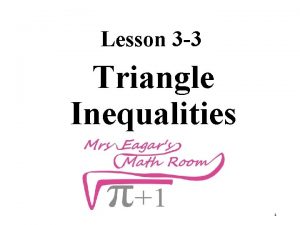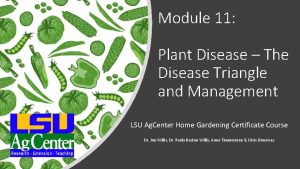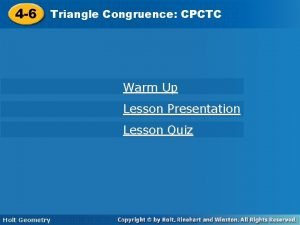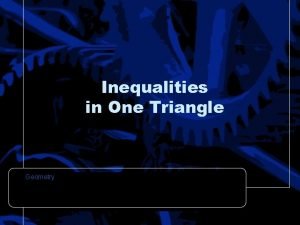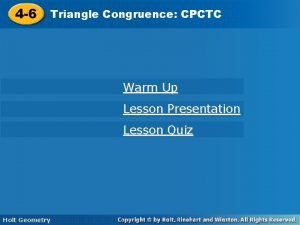Summary of fifth lesson Disease as disease triangle


























- Slides: 26

Summary of fifth lesson • Disease as “disease triangle”, effect of humans, disease as pant-microbe interaction • Different types of disease of wild plants • True effect of disease: fertility+mortality+indirect effect on pollinators+unfair competitive advantage…. but what about the “ carry over effect” • Density dependance

Disease and competition • Competition normally is conducive to increased rates of disease: limited resources weaken hosts, contagion is easier • Pathogens can actually cryptically drive competition, by disproportionally affecting one species and favoring another

Janzen-Connol • Regeneration near parents more at risk of becoming infected by disease because of proximity to mother (Botryosphaeria, Phytophthora spp. ). Maintains spatial heterogeneity in tropical forests • Effects are difficult to measure if there is little host diversity, not enough host-specificity on the pathogen side, and if periodic disturbances play an important role in the life of the ecosystem

Diseases and succession • Soil feedbacks; normally it’s negative. Plants growing in their own soil repeatedly have higher mortality rate. This is the main reason for agricultural rotations and in natural systems ensures a trajectory towards maintaining diversity • Phellinus weirii takes out Douglas fir and hemlock leaving room for alder

The red queen hypothesis • Coevolutionary arm race • Dependent on: – Generation time has a direct effect on rates of evolutionary change – Genetic variability available – Rates of outcrossing (Hardy-weinberg equilibrium) – Metapopulation structure

Diseases as strong forces in plant evolution • Selection pressure • Co-evolutionary processes – Conceptual: processes potentially leading to a balance between different ecosystem components – How to measure it: parallel evolution of host and pathogen

• Rapid generation time of pathogens. Reticulated evolution very likely. Pathogens will be selected for INCREASED virulence • In the short/medium term with long lived trees a pathogen is likely to increase its virulence • In long term, selection pressure should result in widespread resistance among the host

More details on: • How to differentiate linear from reticulate evolution: comparative studies on topology of phylogenetic trees will show potential for horizontal transfers. Phylogenetic analysis neeeded to confirm horizontal transmission

Phylogenetic relationships within the Heterobasidion complex Fir-Spruce Pine Europe Pine N. Am.

Geneaology of “S” DNA insertion into P ISG confirms horizontal transfer. NA S Time of “cross-over” uncertain NA P 890 bp CI>0. 9 EU S EU F

Complexity of forest diseases • At the individual tree level: 3 dimensional • At the landscape level” host diversity, microclimates, etc. • At the temporal level

Complexity of forest diseases • Primary vs. secondary • Introduced vs. native • Air-dispersed vs. splash-dispersed, vs. animal vectored • Root disease vs. stem. vs. wilt, foliar • Systemic or localized

Stem canker on coast live oak

Progression of cankers Older canker with dry seep Hypoxylon, a secondary sapwood decayer will appear

Root disease center in true fir caused by H. annosum



HOST-SPECIFICITY • • • Biological species Reproductively isolated Measurable differential: size of structures Gene-for-gene defense model Sympatric speciation: Heterobasidion, Armillaria, Sphaeropsis, Phellinus, Fusarium forma speciales


Phylogenetic relationships within the Heterobasidion complex Fir-Spruce Pine Europe Pine N. Am.

Recognition of self vs. non self • Intersterility genes: maintain species gene pool. Homogenic system • Mating genes: recognition of “other” to allow for recombination. Heterogenic system • Somatic compatibility: protection of the individual.

INTERSTERILITY • If a species has arisen, it must have some adaptive advantages that should not be watered down by mixing with other species • Will allow mating to happen only if individuals recognized as belonging to the same species • Plus alleles at one of 5 loci (S P V 1 V 2 V 3)

MATING • Two haploids need to fuse to form n+n • Sex needs to increase diversity: need different alleles for mating to occur • Selection for equal representation of many different mating alleles

SEX • Ability to recombine and adapt • Definition of population and metapopulation • Different evolutionary model • Why sex? Clonal reproductive approach can be very effective among pathogens

Long branches in between groups suggests no sex is occurring in between groups Fir-Spruce Pine Europe Pine N. Am.

Small branches within a clade indicate sexual reproduction is ongoing within that group of individuals NA S NA P 890 bp CI>0. 9 EU S EU F
 The fifth discipline chapter summary
The fifth discipline chapter summary The fifth discipline summary
The fifth discipline summary Bharathi viswanathan
Bharathi viswanathan Disease triangle
Disease triangle Clavibacter
Clavibacter How to construct incenter of triangle
How to construct incenter of triangle Triangle pse is similar to triangle tsv
Triangle pse is similar to triangle tsv Charcot triangle
Charcot triangle Sierpinski triangle pascal's triangle
Sierpinski triangle pascal's triangle First korotkoff sound
First korotkoff sound Fifth gear loop the loop
Fifth gear loop the loop Ffa creed paragraph 4 meaning
Ffa creed paragraph 4 meaning Hamlet 5th soliloquy
Hamlet 5th soliloquy Fifth standard solar
Fifth standard solar Cleaning up the stables the fifth labor of hercules
Cleaning up the stables the fifth labor of hercules Fifth business archetypes
Fifth business archetypes 5th creed paragraph
5th creed paragraph Fifth third hsa
Fifth third hsa Compensating fifth wheel
Compensating fifth wheel Blessed are the merciful examples
Blessed are the merciful examples Fifth korotkoff sound
Fifth korotkoff sound How to remember the planets
How to remember the planets Lateral lingual swellings
Lateral lingual swellings La quinta disciplina the fifth discipline fieldbook
La quinta disciplina the fifth discipline fieldbook Whats the fifth planet from the sun
Whats the fifth planet from the sun One two three four five
One two three four five Neiman marcus vs saks
Neiman marcus vs saks
